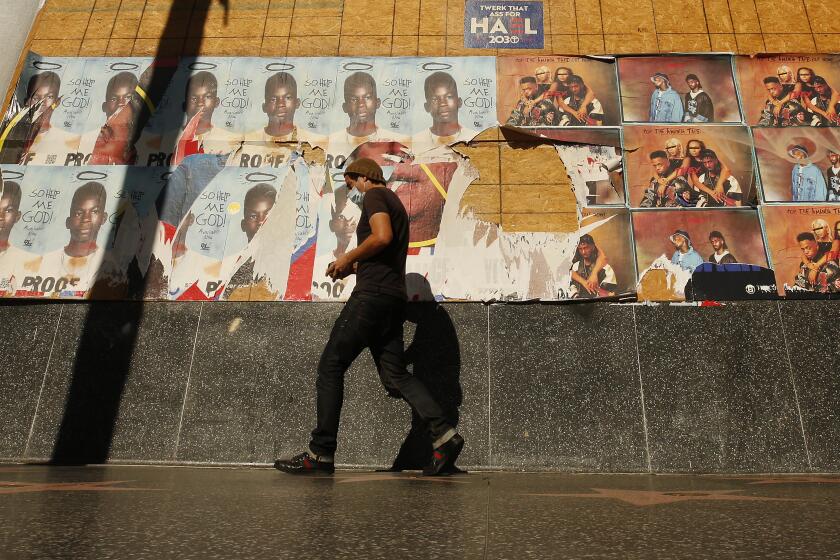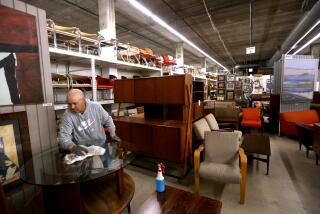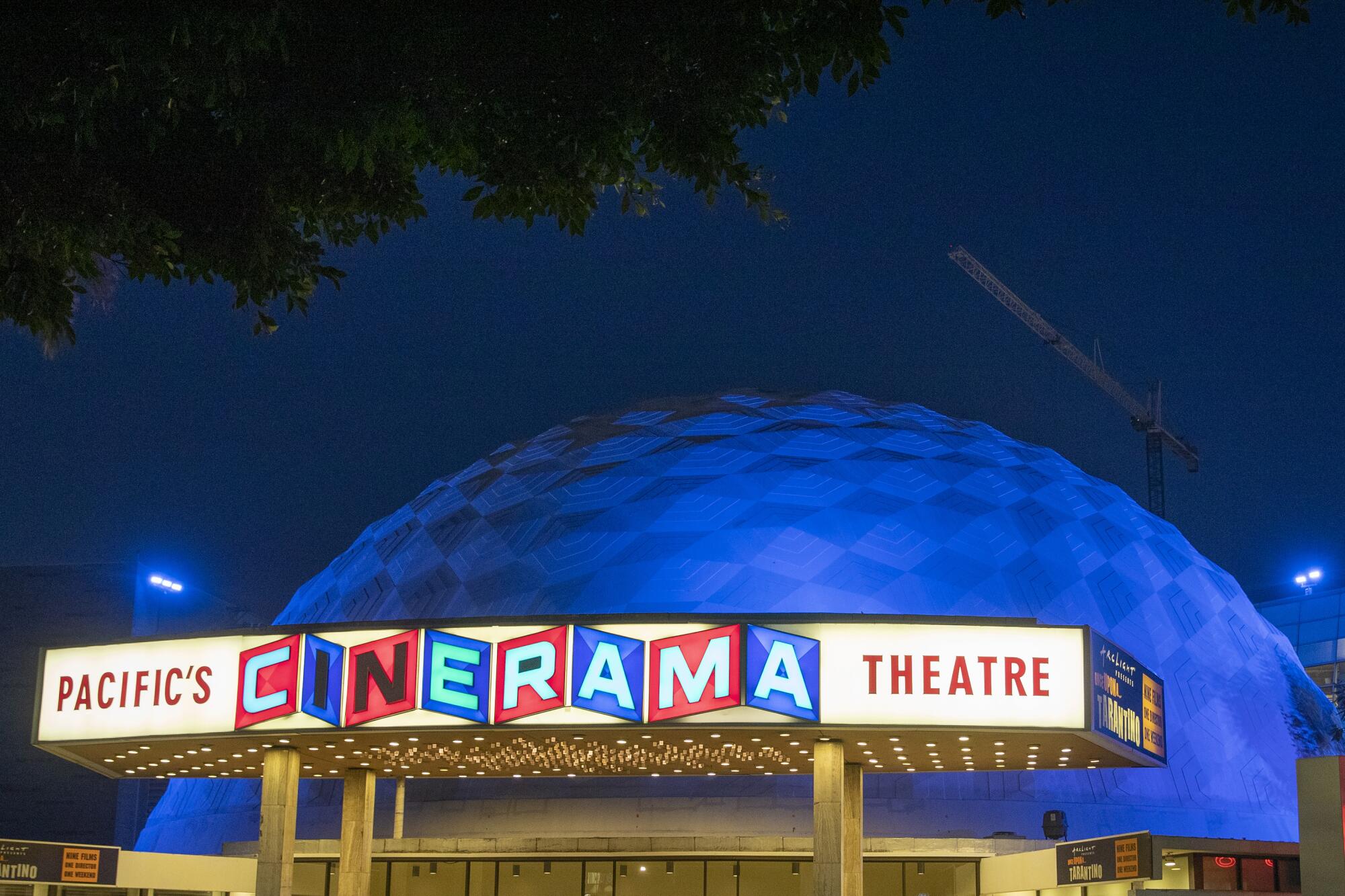
Before I moved within walking distance of the ArcLight Hollywood and its Cinerama Dome, I wasn’t that fussy about where I went to see a movie.
All I needed was a big screen, popcorn and a box of Milk Duds (which I eat only at the movies, even though they stick to my teeth because they take so long to chew that if I slowly dole them out, I can make them last until the lights come back on).
The ArcLight Hollywood raised the bar for me. It spoiled me for anywhere else.
I join the legions left bereft by the recent announcement from the owner of Pacific Theatres and ArcLight Cinemas that, after a long pandemic shutdown, it will not reopen any of its locations. Not its mall theaters. Not any of the ArcLights. Not even the flagship in Hollywood.
Let me tell you about the movie-lovers’ mecca created at the ArcLight Hollywood and why its loss would be particularly painful for Hollywood the neighborhood, my neighborhood, if we should really lose it, though I hope and trust that we won’t.
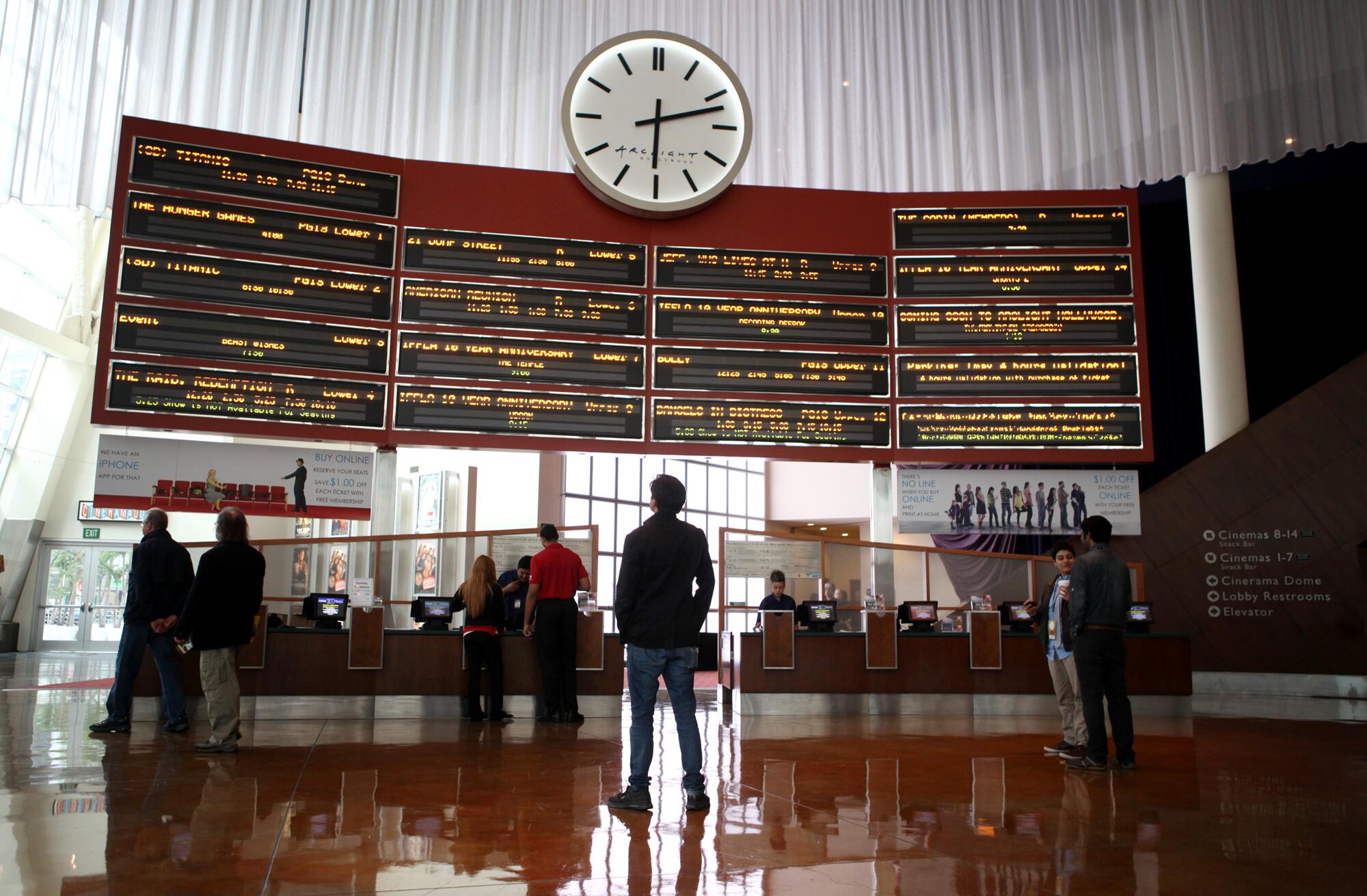
I hope that some of the many movie people with deep pockets who have long frequented and loved the place will find a way — with the city’s help and encouragement — to step in to rescue it and keep what’s special about it intact. I believe that any effort and expense required to revive the theater just as it was would be worth it, and here’s why.
In ordinary times, when there’s not a pandemic, millions of people come from all over the world each year in search of the Hollywood of their imagining. But for movie fans expecting to find that Hollywood within the physical boundaries of the neighborhood, the reality often falls depressingly short of expectations — as many a tourist can attest.
Sure, there’s plenty of movie history there tucked in the strips of kitschy souvenir shops and places that sell cheap suits, cheap food, wigs and shiny tall boots and bongs, but a lot of the neighborhood’s connection with the movies is well hidden, lacking good signage or any signage at all.
Unless they show up on the day of the Oscars or when an actor’s getting a star, the places people tend to know to go to feel static — those imprints of hands and shoes frozen forever in cement, those names on pink terrazzo that keep so many tourists’ eyes not on their surroundings but stuck to the often very grimy sidewalks.
The ArcLight Hollywood, by contrast, represented the living, breathing movie industry. It accomplished the rare feat of melding Hollywood the real with Hollywood the ideal.
With its costume and prop exhibits in the lobby and its Q&As with actors and directors, it showcased one of our city’s top industries in ways that made it shine so brightly that people from all over our area who have no interest in my neighborhood’s tourist traps traveled long distances just to go there. I can’t begin to count the number of times I ran into people I knew there who had made the trip from as far as Long Beach, La Canada, Baldwin Hills.
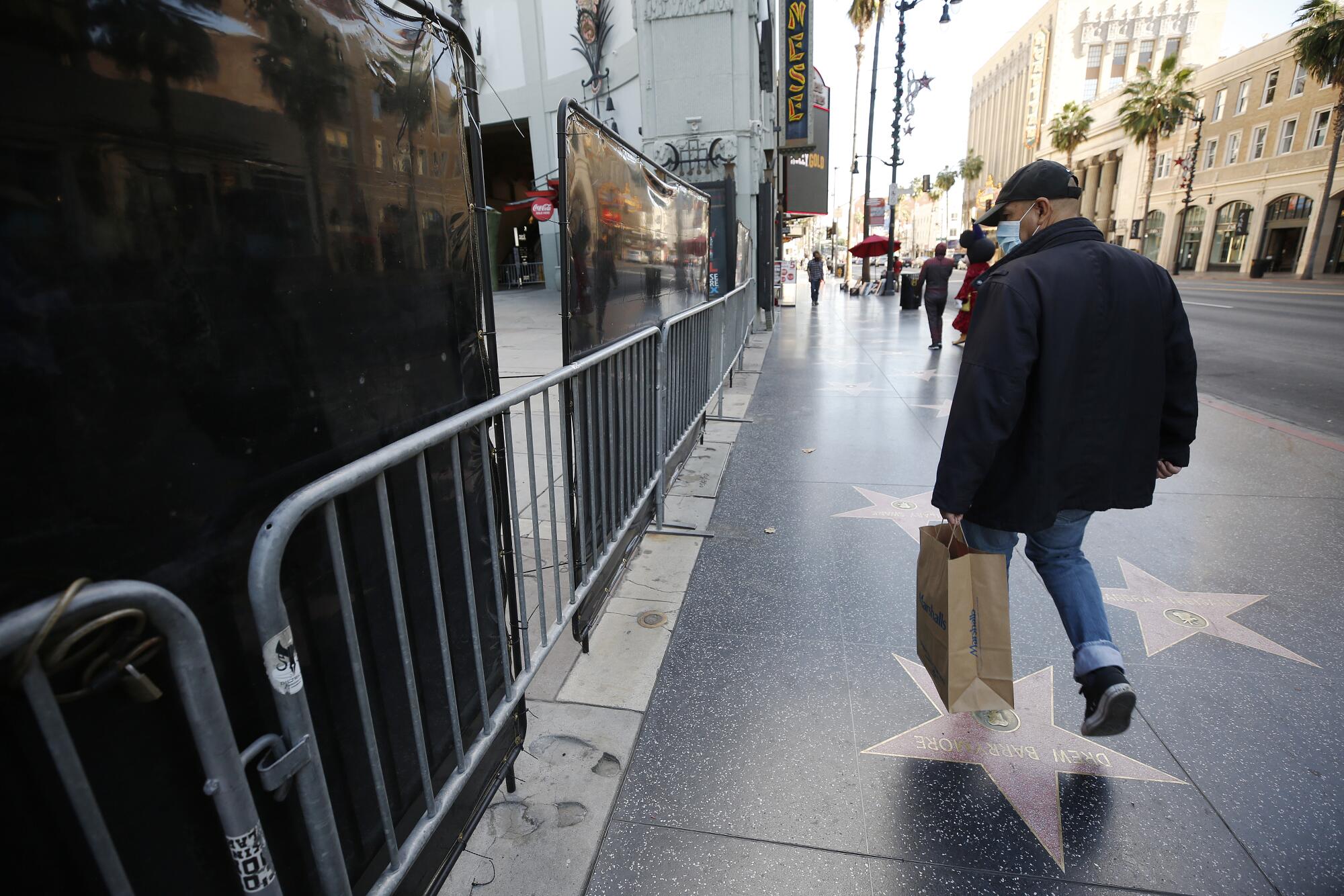
That’s worth noting because the pandemic has exposed our vulnerabilities — including how geared to tourists so much of the heart of Hollywood is and how quickly it becomes a grim ghost town when those tourists disappear.
Hollywood Boulevard is normally Los Angeles’ tourist strip. But during the COVID-19 pandemic, it is eerily empty
There’ll be other crises in the future that absent them again. For our own stability and resilience, we need much more of the Hollywood that makes locals want to spend time and money there — that attracts residents of the neighborhood and of the city. The ArcLight Hollywood is the ultimate example. People would come there to watch a movie and then stay in its environs for a while, browsing the vinyl at Amoeba Records, which used to be next door, and eating at nearby restaurants that probably would never have dared open without the multiplex’s success.
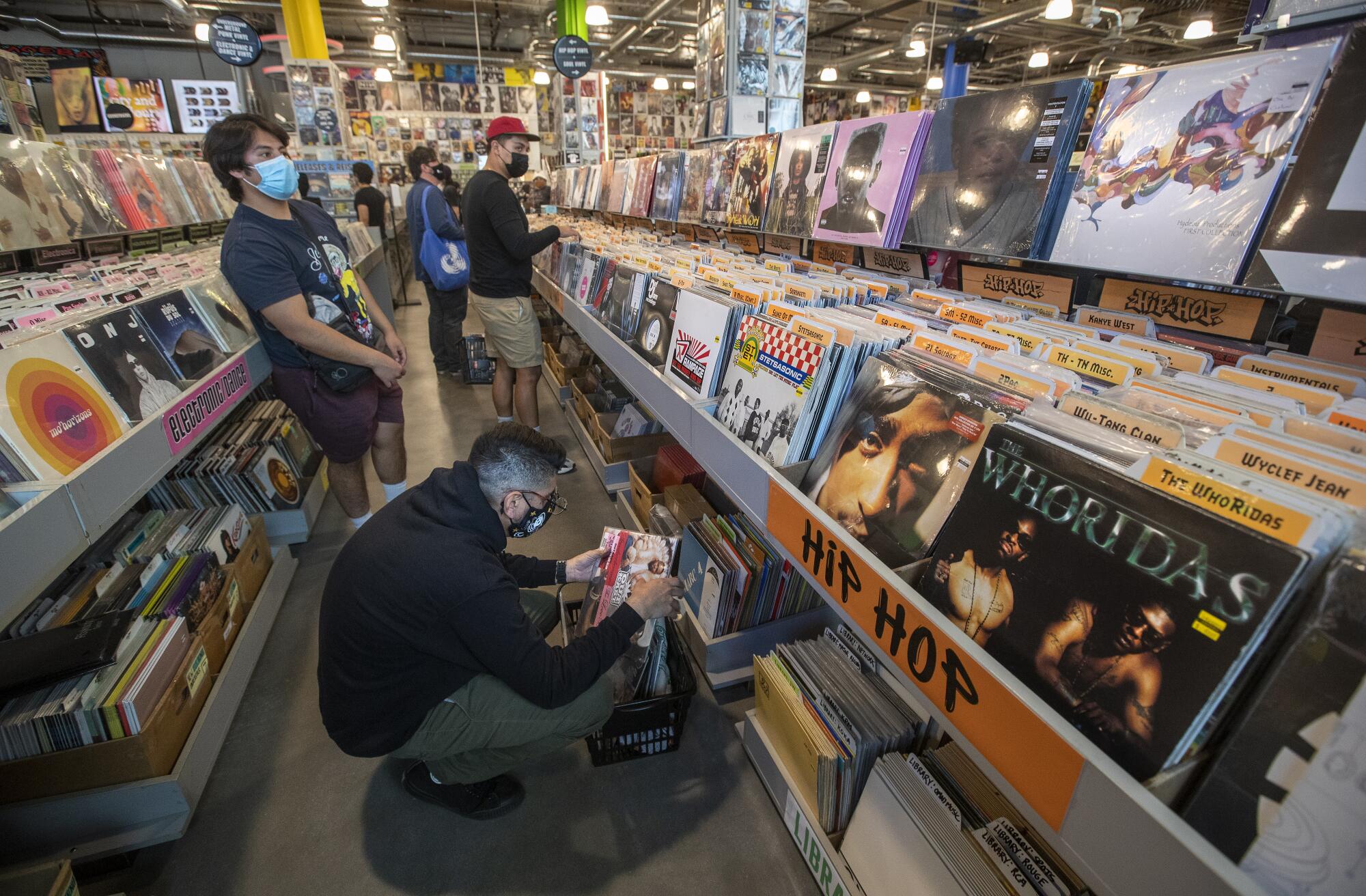
Amoeba Records, another major Hollywood draw, sold its first home in Hollywood for a whole lot of money — but it didn’t abandon the neighborhood. It recently reopened with a smaller footprint in a space five minutes by foot to the northeast.
But back to the ArcLight, which I always saw as a modern spin on the original movie palaces. It lacked the ornateness. Its aesthetic was streamlined and spare. But it had the pizzazz, more than anything because of the wonderful concrete dome, designed in 1963 by Welton Becket and Associates (which gave the neighborhood another of its treasures, the Capitol Records building). So many people love its wide, curved screen. Personally, I love the dome best from the outside.

It‘s the first thing you see as you approach the theater complex from any direction, and it never fails to catch the eye. I’ve been photographing it for years because it has so many looks, depending on the angle and the time of day. Sometimes it’s half a golf ball. Sometimes it’s a lunar landing — the moon come down to rest on Sunset Boulevard.
So first you take in that dome — and if you arrive from Sunset Boulevard, its playful, circus-like red-white-and-blue Googie-style marquee.
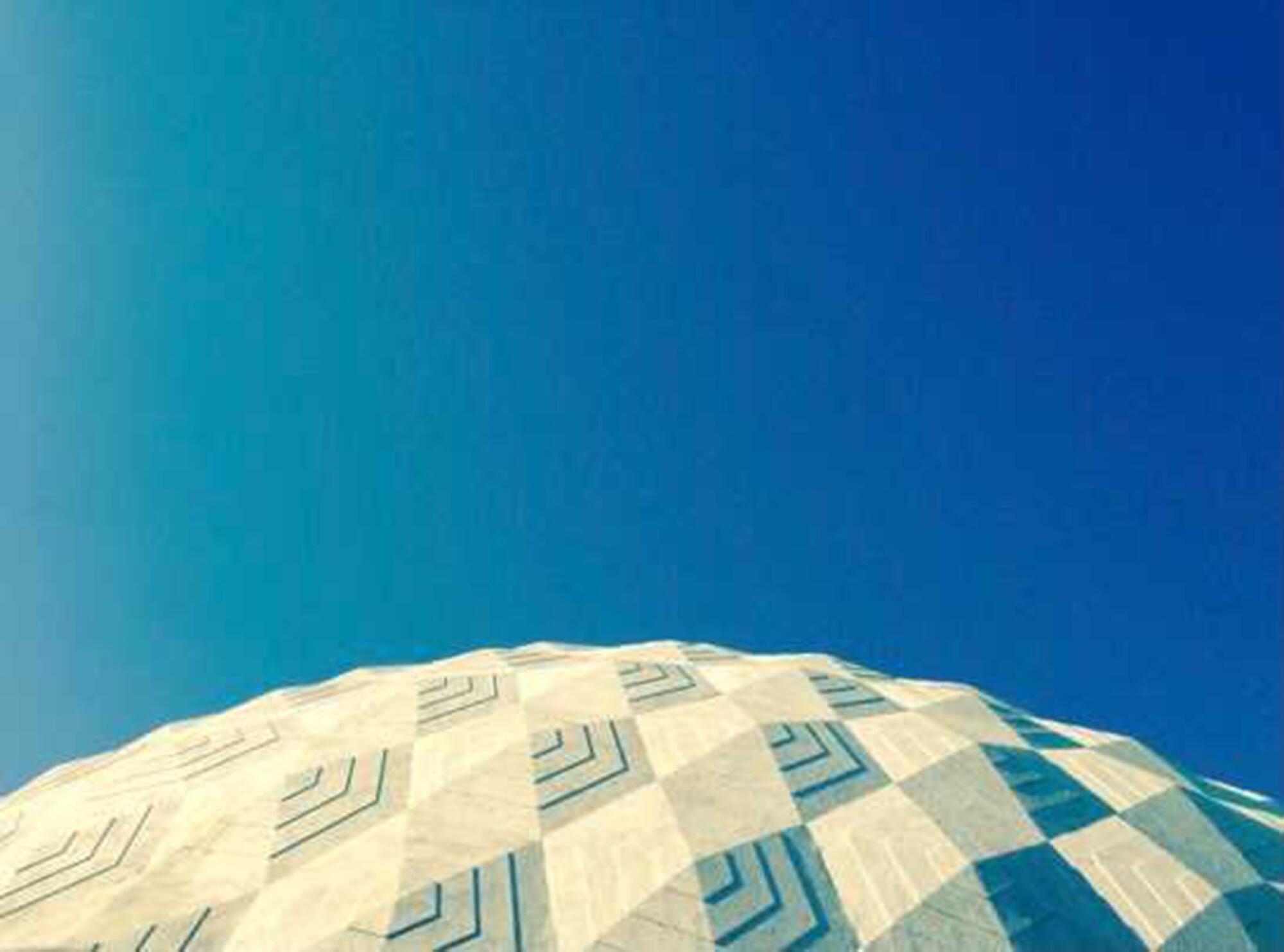
Before the ArcLight shut down, you’d walk into the courtyard and come upon people meeting up, mingling and chatting and lingering. Then you’d step into the enormous, light-filled lobby — with the large round clock above constantly updated LED stacks of the different theaters’ movies and start times on a sexy, curved sign reminiscent of the arrival and departure boards at large railroad stations and airports. Just looking at it made the anticipation grow. You were going somewhere. You were about to have an adventure. And often you would start that adventure by climbing the long, wide staircase to the second level, a great place to make a grand entrance.
And then the 15 theaters themselves, which, big and small, were state of the art. In a neighborhood whose name is synonymous the world over with moviemaking, the movie complex celebrated the art form by delivering the optimum movie-watching experience — not just with deep, comfy stadium seats you could choose and reserve in advance and top-of-the-line equipment to make each movie sound and look its best but with the code of conduct clearly messaged in the earnest and enthusiastic speeches delivered by its ushers before the trailers (only trailers, no other ads) began to roll.
No walking in late. No talking. No cellphone disturbances, either from ringing or texting.
Audiences who came to the ArcLight Hollywood observed the etiquette. They often stayed seated through the closing credits, clapping for people they knew. That’s because many an audience included people personally involved in the making of movies, which also made it an excellent place for spotting real-live celebrities (more exciting than the wax ones on the boulevard).
When I show out-of-town guests my Hollywood, I take them to Musso & Frank, to the trail behind the Hollywood sign, to my beloved Hollywood Farmers Market. I used to take them to the movies, too, at the ArcLight, because it was a safe bet that they’d consider seeing a movie there a highlight of their Hollywood tour.
The ArcLight Hollywood showed blockbuster action films and small, independent ones, and so it pleased a diverse crowd. That’s something else I think is worth mentioning.
I want it to continue showing movies — but not a certain brand of movies. I don’t want a studio to take it over simply to showcase its own product. I love that the 1926 El Capitan Theatre on Hollywood Boulevard survives in its full glory because of the stewardship of its owner, the Walt Disney Co., but I don’t often go there because I don’t often want to go to a Disney movie. I’m nervous about how Netflix’s ownership over time will change the viewing fare at the Egyptian Theatre.
The ArcLight Hollywood, a design compromise forged the last time the Cinerama Dome was under threat in 1998, is a rare case of a Hollywood remake done right.
It doesn’t need to be upgraded. It doesn’t need to offer moviegoers couches or steak dinners to eat while viewing.
It just needs to remain a perfect showcase for movies in the place in the world most associated with them.
Here’s my plea to whoever might come courting my favorite movie theater: Rescue but don’t reinvent.
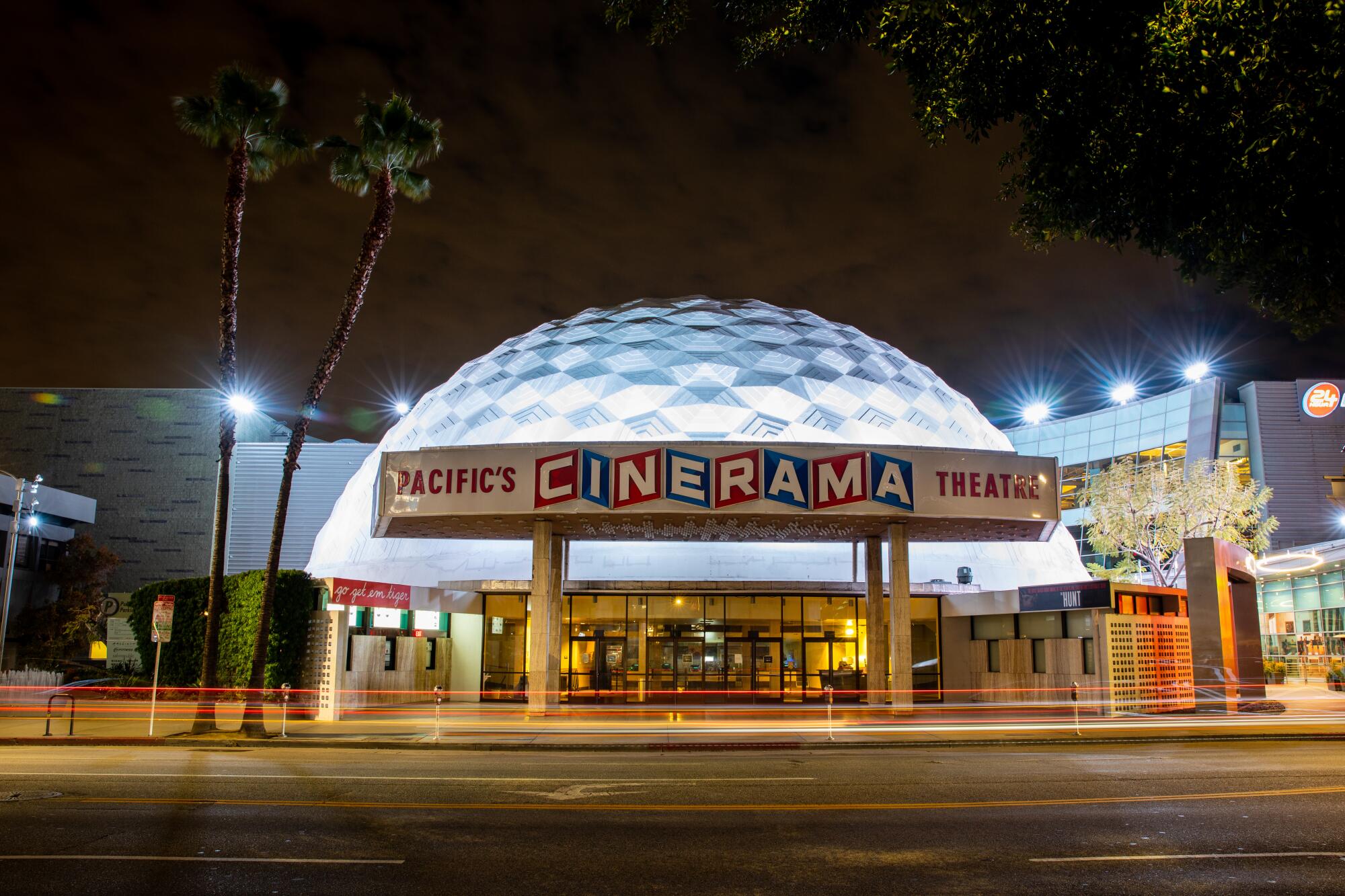
More to Read
Start your day right
Sign up for Essential California for news, features and recommendations from the L.A. Times and beyond in your inbox six days a week.
You may occasionally receive promotional content from the Los Angeles Times.
